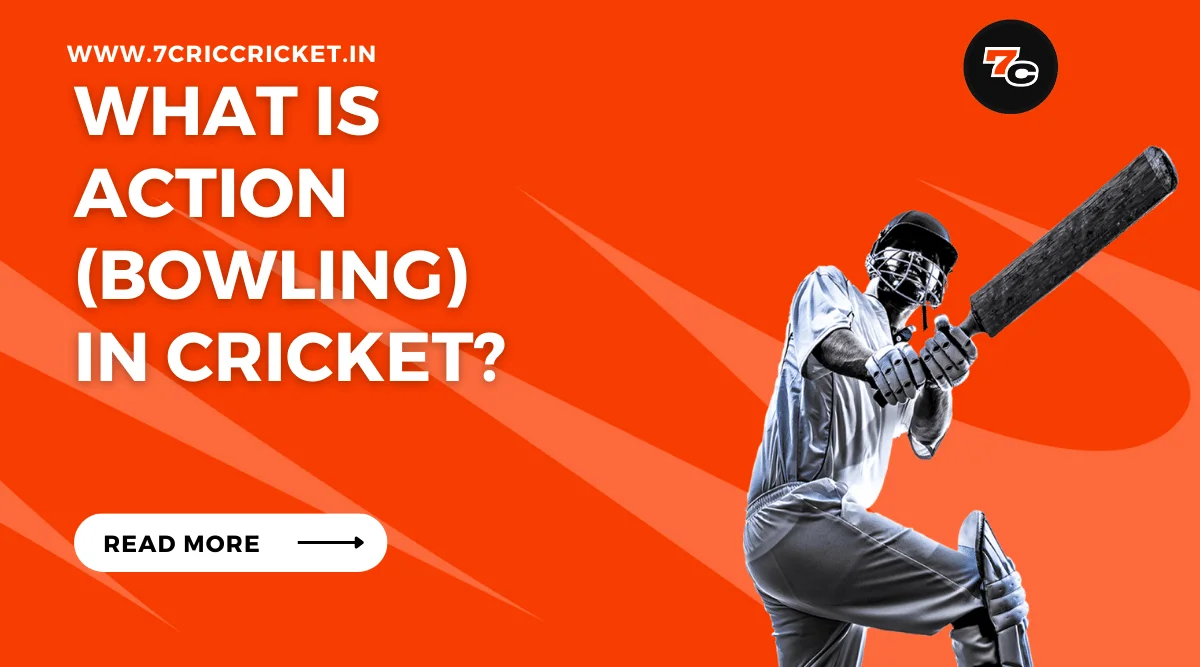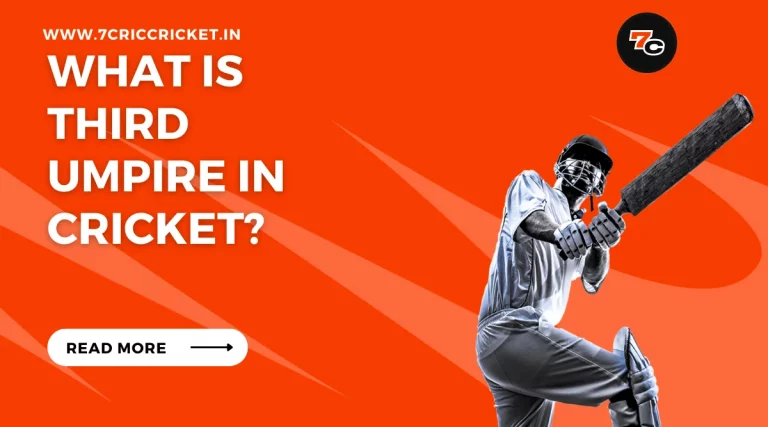What Is Action (Bowling) in Cricket?
Bowling action is an essential element in the game of cricket, shaping the outcome of matches and determining the success of bowlers.
This article delves into the intricacies of bowling action, exploring its significance, various types, techniques, movements, and the rules and regulations governing it.
200% Spribe Aviator Welcome Bonus
200% Spribe Aviator Welcome Bonus
- Easy Sign-Up and Deposits
- Win 1000x Bet Amount!
- 300% Welcome Bonus up to ₹10,000
By examining the impact of bowling action on the game, we gain insights into this crucial aspect of cricket that empowers players to unleash their skills and contribute to their team’s triumph.
Key Takeaways in This Article
ShowImportance of Bowling Action
The importance of a bowler’s action in cricket cannot be overstated. Bowling techniques and physical demands play a significant role in determining a bowler’s effectiveness and success on the field.
A bowler’s action refers to the sequence of movements and mechanics involved in delivering the ball.
It encompasses the run-up, the approach to the crease, the release of the ball, and the follow-through.
Bowling techniques vary from bowler to bowler, with each player developing their unique style.
The action may differ based on factors such as the bowler’s body type, flexibility, and strength.
A well-executed action allows the bowler to generate speed, accuracy, and movement on the ball, making it challenging for the batsman to score runs.
However, a bowler’s action also places significant physical demands on their body. The repetitive nature of bowling can lead to various injuries, especially if the action is flawed or puts excessive strain on certain body parts.
Bowlers must have a strong core, flexible shoulders, and well-maintained fitness levels to withstand the rigors of their action.
Proper training, conditioning, and regular practice are essential to avoid injuries and maintain optimal performance.
Different Types of Bowling Action
There are various bowling actions employed in cricket, each with its own unique characteristics and techniques.
Bowling mechanics and style play a crucial role in determining the effectiveness and success of a bowler. Let’s explore some of the different types of bowling actions commonly seen in the game:
| Type of Bowling Action | Description |
|---|---|
| Fast Bowling Action | In this action, the bowler generates maximum pace by utilizing a long run-up, explosive delivery stride, and a strong front arm. Fast bowlers often have a side-on or semi-side-on body position, allowing them to generate more power and speed. |
| Spin Bowling Action | Spin bowlers rely on variations in flight, trajectory, and spin to deceive the batsman. They use a more upright body position and a shorter run-up, allowing them to focus more on grip and wrist position to impart spin on the ball. |
| Medium-Pace Bowling Action | Medium-pace bowlers strike a balance between speed and control. They usually have a smooth and rhythmic run-up with a slightly higher arm action than fast bowlers. They focus on accuracy, movement off the pitch, and variations in pace. |
| Sling Bowling Action | Sling bowlers have a lower and more unorthodox arm action, releasing the ball from a lower point closer to the body. This action creates a natural angle and can be difficult for batsmen to pick up. Sling bowlers often rely on swing and variation in pace. |
| Seam Bowling Action | Seam bowlers aim to exploit the movement off the pitch, especially seam movement. They have a more upright and balanced action, placing the seam in an upright position while releasing the ball. This action allows the bowler to generate seam movement either towards or away from the batsman. |
Understanding the different types of bowling actions can help spectators appreciate the skills and techniques involved in the game.
Each type requires specific training and practice to master the nuances of bowling mechanics and style.
Whether it’s the sheer pace of a fast bowler or the subtle variations of a spin bowler, every bowling action adds its own dimension to the game of cricket.
Techniques and Movements in Bowling Action
To understand the techniques and movements involved in bowling action, it is important to analyze the mechanics and execution of each type of bowling action in cricket.
Bowling action refers to the sequence of movements performed by a bowler to deliver the ball towards the batsman.
These techniques and movements can vary depending on the type of bowling action being used, such as the fast bowling action or the spin bowling action.
Here are some key aspects to consider when it comes to techniques and movements in bowling action:
- Body alignment: Maintaining proper body alignment is crucial to achieve accuracy and consistency in bowling action.Common mistakes in bowling action include tilting the body too far forward or sideways, which can affect the direction of the ball.
- Arm position and release: The position and release of the bowling arm play a significant role in determining the trajectory and speed of the ball. Proper arm positioning and a smooth release are essential for a successful delivery.
- Footwork and follow-through: Good footwork is essential for generating power and transferring momentum into the delivery stride. A balanced and controlled follow-through helps in maintaining a stable finish to the bowling action.
- Improving bowling action through practice: Consistent practice is key to improving bowling action. Focusing on specific aspects, such as body alignment, arm position, and footwork, can help bowlers refine their techniques and movements.
Rules and Regulations for Bowling Action
Continuing from the previous subtopic on techniques and movements in bowling action, it is important to familiarize oneself with the rules and regulations governing bowling action in cricket.
These rules are in place to ensure fair play and prevent any unfair advantage being gained by bowlers.
According to the laws of cricket, a bowler’s action must adhere to certain guidelines. The most important aspect is the straightening of the bowling arm during the delivery stride.
The International Cricket Council (ICC) has set a limit of 15 degrees of flexion for the bowling arm.
This means that the angle between the upper arm and forearm should not exceed 15 degrees at the point of release.
Umpires are responsible for monitoring and judging the legality of a bowler’s action. If they suspect an illegal action, they can report it to the ICC, which will then conduct tests to determine the degree of arm flexion.
If a bowler is found to have an illegal action, they may face penalties, including being banned from bowling in international cricket.
These rules and regulations aim to maintain the integrity of the game and ensure that all bowlers compete on a level playing field.
By enforcing strict guidelines on bowling actions, cricket authorities seek to uphold the spirit of fair competition and protect the interests of the game.
Impact of Bowling Action on the Game
The bowling action in cricket has a significant impact on the game, influencing the delivery of the ball and ultimately shaping the outcome of each play. Here are four key ways in which the bowling action can affect the game:
- Bowling action’s effect on spin rate: The way a bowler releases the ball can greatly impact the amount of spin they can generate. A smooth and fluid action allows for better control and manipulation of the ball, resulting in greater spin variations and increased chances of deceiving the batsman.
- The role of video analysis in bowling action correction: Video analysis has become an invaluable tool in modern cricket for identifying flaws in a bowler’s action. Coaches and players can closely examine the mechanics of the action, pinpointing areas that need improvement and working on corrective measures to enhance performance and reduce the risk of injuries.
- Impact on accuracy and consistency: A well-executed bowling action enables bowlers to maintain accuracy and consistency in their deliveries. In contrast, faulty actions can lead to inconsistent line and length, making it easier for batsmen to predict and counter the deliveries.
- Influence on pace and power: The bowling action also plays a crucial role in determining a bowler’s pace and power. An efficient action allows bowlers to generate more speed and power, making it harder for the batsmen to react and score runs.
Frequently Asked Questions
Conclusion
In conclusion, the bowling action in cricket plays a crucial role in determining the effectiveness of a bowler.
Different types of bowling actions, along with various techniques and movements, contribute to the overall performance of a bowler.
Get up to ₹20,000 Bonus Every Week!
Get up to ₹20,000 Bonus Every Week!
- Fastest Indian Rupees Withdrawals
- Fast deposits with UPI
- 300% Welcome Bonus up to ₹10,000
Adhering to the rules and regulations set by the governing bodies ensures fairness and maintains the integrity of the game.
The bowling action significantly impacts the outcome of a match, making it an essential aspect of cricket.
Frequently Asked Questions (FAQs)
Can a Bowler Change Their Bowling Action Mid-Match?
Yes, a bowler can change their bowling action mid-match.
However, altering their technique can have a significant impact on their performance as it requires adjustments in timing, coordination, and accuracy.
What Are the Common Mistakes Bowlers Make in Their Bowling Action?
Common mistakes bowlers make in their bowling action include incorrect footwork, improper body alignment, and incorrect release of the ball.
Techniques for improving bowling action involve focusing on these areas and seeking guidance from coaches and experts.
How Does a Bowler's Physical Fitness Affect Their Bowling Action?
The physical fitness of a bowler plays a crucial role in their bowling action.
Proper technique and flexibility are vital in achieving an effective and efficient action, allowing the bowler to generate maximum power and accuracy while minimizing the risk of injury.
Are There Any Restrictions on the Length of a Bowler's Run-Up in Their Bowling Action?
There are no specific restrictions on the length of a bowler’s run-up in their bowling action.
However, it is crucial for a bowler to maintain consistency in their run-up length to ensure a smooth and effective delivery.
Do Different Types of Bowling Actions Have Different Effects on the Ball's Trajectory and Speed?
Different types of bowling actions can have varying effects on the ball’s trajectory and speed.
Spin bowlers employ different grips and wrist movements to generate spin, while weather conditions like wind can also impact the ball’s movement in the air.








